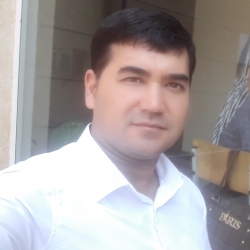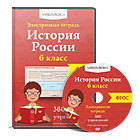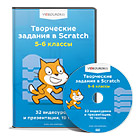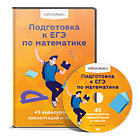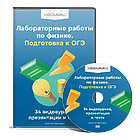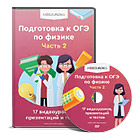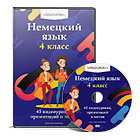To provide students of music education in higher education with an understanding of the methods of introducing folk music to the lessons of music culture.
Annotation: The music created by our wise people is our great spiritual wealth, which is also an invaluable source for the moral and ideological aesthetic education of the younger generation. Because the baby begins to perceive the most elegant and relaxing form of folk music - the mother goddess, while still in the cradle, without speaking. So folk music is the closest thing to the human heart. Therefore, a special place in the music programs of secondary schools of the Republic is given to folk music. Folk music materials are required to be included in each class's annual curriculum.
In this article, students of the Department of Music Education of the Higher Education Institution can learn how to introduce folk music to the lessons of music culture.
Keywords: Law on Education, in the art of music, moral and aesthetic education, Uzbek folk instruments, lyrical works, singing, shashmaqom, shashmaqom songs, folk melody - songs.
Introduction. Today's period requires a comprehensive study of the process of restoration of our national values, our centuries-old artistic heritage and traditions. is of particular importance as an important tool in educating in the spirit. Folk music - labor, ceremonies, epics, yalla, lapar, big songs, seasonal songs (Navruz, folk holiday), which have been living for centuries in the history of our singing, contribute to the development of lyrical works and the art of singing. The master includes the work of composers. Most importantly, the inner experiences are clearly reflected in these works. Folk music plays an important role in the moral and aesthetic education of schoolchildren. That is why the Law "On Education" and the State Educational Standards Program pay great attention to our national music, classical works, national values, Uzbek folk art, and include music in grades I-VII. The program is based on the principle of simple to complex, from Uzbek folk instruments, folk melodies and songs to classical works, the history of the art of maqom and shashmaqom songs. Today, in all secondary schools, one of the main issues is the moral and aesthetic education of the younger generation, the educational process. Such opportunities in the art of music serve as a unique resource for students to develop into well-rounded individuals. The relevance of the article is that in the lessons of music culture, by teaching Uzbek folk music, schoolchildren are interested in folk music, love, patriotism, respect for adults, morality, the ability to feel and appreciate beauty. nurture feelings.
Folk music, like other forms of folklore, is an art form that has a lot of historical facts, from artistic and ideological content to simple, concise and perfect forms.
The brightest colors and subtleties of the art of national music are reflected in the deep thoughts and ideas of the people, rich in philosophical and social thinking. At the heart of folk music can be clearly seen the events of each nation, its struggle for happiness.
The rich music created by our wise people is our great spiritual wealth, which is also an invaluable source for the moral and ideological aesthetic education of the younger generation. Because the baby begins to perceive the most elegant and relaxing form of folk music - the mother goddess in the crib before she speaks. So folk music is the closest thing to the human heart. Therefore, a special place in the music programs of secondary schools of the Republic is given to folk music. Folk music materials are required to be included in each class's annual curriculum.
Because folk music is the basis of professional music, and every composer can create a new work of high art and polyphony only as a result of the appropriate use of folk music styles and elegant melodies. Proof of this is the fact that the major and minor moods in modern music, which are common to all nations, were formed only as a result of the high development of folk music lessons and were determined by the emergence of classical music.
Regular study of selected folk songs and children's songs in the program in primary school, learning to understand the music of sister nations on the basis of skills of understanding Uzbek folk music, teaching students to listen to the melody and poetry of the song. learning to understand and comprehend the content correctly can use artistic images specific to the art of singing.
In the study of folk music in grades 4-7 it is necessary to explain various pedagogical activities, conversations, stories, questions and answers, short conversations, writing essays, work with textbooks, effective use of additional literature. It is known that students in grades 6-7 have a strong perception of information and are interested in understanding the essence of new issues. Therefore, in the study of each work, the short-term interesting information of the reader about the musical culture of the nation that owns the work, the nature of the work, the artistic and ideological content is of great importance.
Conversation and question-answer methods in the study of the work strengthen the creative attitude of students to the work. Folk music is a mirror of the period. Therefore, it reflects the essence of the period he created, the tragedy of that nation, the history of the struggle for freedom, the dreams and aspirations for happiness. That is, folk music has its own artistic language.
Folk musicians have created simple, concise and deep thoughts, melodies of folk epics and poems in accordance with the artistic, ideological and poetic tone. Therefore, it is expedient to connect folk music with the materials studied in literature lessons, especially in grades 4-5, where folklore is given a wide place. it must take advantage of this opportunity. It should also be noted that for a class, it is important to clearly define the interrelated goals in the program materials and to take into account each specific opportunity. As students in elementary school learn about their characteristics for music genres, in 4th grade they are first introduced to the basic features of music art, its simplest and most popular genres, and the difference between professional music and professional music created by a composer. It is necessary to explain that the folk music genre has a long history of development, as well as artistic folklore, to sound in a simple, fluent, bright tone, melancholy and cheerful way, as well as to ask and answer questions about famous folk singers. This means that in Grade 4, students need to be able to think in a way that is a little bit faster, with a strong sense of discussion. In the upper grades, folk music is studied in a more serious way, and listening to music plays a key role.
Linking the lessons to the conversation about Uzbek folk music, the richness of the means and expressions of the types and genres of Uzbek folk music, the fact that the works are the national pride of our people, inspire people to work, kura shva creativity It is very useful to explain to the readers that it is a source, that it came, that the events in the history of our people are reflected to a certain extent in melodies and songs of different genres. Students will listen to examples of Uzbek folk songs based on their experience in understanding Uzbek folk songs.
Students will learn about folk songs and their interrelationships after listening to Uzbek songs: Turkmen, Azerbaijani and other songs. Brief information about the musical culture of this people is comprehensive. they understand deeply. Extracurricular activities on listening to songs on the theme "Dances and melodies of fraternal peoples" broadened and strengthened the knowledge and impressions gained by students in the classroom. As a result, students gain an understanding of the difference between professional music and folk music. The most important part of the study of folk music in the upper grades is to get acquainted with the works of "Shashmaqom" and its famous teachers, teachers Holim Ibodov, Abdulaziz Abdurasulov, academician Yu. Rajabi. At the same time, "Shashmaqom" was formed on the basis of Tajik and Uzbek folk music over a long period of time. It is also necessary to dwell on the commonalities in which the features of similarity and commonality have ideological goals.
In order to bring together the music of all peoples, to enrich each other, to study the works of Haji Abdulaziz Abdurasulov, to study the Uzbek and Tajik musical heritage and performing arts, to study the status of Uzbek and Tajik poets in a new modern way. It is not a secret that he sang with his poems, traveled to the countries of the East in order to enrich his art, and gained a great reputation by performing our national music there.
It is known that today folk music is flourishing. In the labor and social life of our people, they become examples of creativity. There are very few houses or schools and boarding schools without musical instruments now. Thousands of folk talents and professional artists are creating new dances and songs. This means that schoolchildren are in an environment of more folk music tones at school and in all other public places, and are more likely to perceive artistically different folk music on their own terms. Folk music not only arouses aesthetic pleasure in students, but also deepens their ideological and emotional experiences and teaches them to feel. It allows for a comprehensive understanding of the music of different peoples and multi-ethnic, multi-faceted music.
Music science is an important tool in educating students in the spirit of national pride and inter-ethnic friendship, as well as in the development of folk music.
We also find the word "song" in the book "Devonu lug'at turk" by the famous 11th century philologist Mahmud Kashgari. He translated the word koshut into Arabic as "Poem", "Qasida", "Rejiz". A study of the history of Uzbek folk songs If we examine the songs in the three volumes of "Devonu lug'atit turk", we will see that a thousand years ago the songs were colorful, their language, phrases and weight were mature.
Mahmud Kashgari's Devonu lug'atit turk also contains many fragments of historical genres depicting the life of ancient Turkic peoples. They are distinguished by their high artistry. There are also legends of ancient world legends and tribes. Most importantly, there are examples of labor, rituals, customs, and songs of the season.
There are inner experiences, excerpts from love songs. They are a folk art: a poetic turtlicoar in the weight of a finger. Here are some examples. Academician Aziz Kasamoq adapted them to the concept of modern people.
The examples given show that in the folklore of ancient times, the poetry of the Turkic peoples, the emergence of meaningful, different forms and types of music on different themes of the leading genre of music.
Devonu lug'atit turk is an example of the later form of the song, which is based on the lapar genre.
After the independence of the Republic of Uzbekistan, new and significant work began in all areas of development. Efforts have also been made to delve deeper into the long history of our musical heritage. In particular, there are ample opportunities for a comprehensive study of the history of our musical art, the history of its great representatives and its transmission to our people. As the head of our state IAKarimov noted, "there is no more honorable task in this world than to be free from slavery and mutiny, to hold high, to restore the traditions of our ancestors and be their worthy heir." it should be noted that it is time to continue its development by restoring the immortal legacy left by his mentors to the executive guards and them.
The purpose of these facts and opinions is to give our listeners a brief overview of the struggles of traditional songwriters who have lived for centuries.
For some reason, no serious scientific research has been done on bo.
As mentioned above, Mahmud Kashgari's book "Devoni lug'atit turk" says that the song is more difficult to find, and that there are examples of its lapar-based forms - debates.
The musical expression of these songs has not survived to our time. It is not known whether they were only at the level of the tone of the poem, or whether they reached a complete, perfect level. It’s hard to say anything about that. the poetic basis of the song can be assumed to be a melody based on a single verse or four verses of a completed definite form. Performed in combination with theater and dance.
Uzbek folk music and oral poetry have a wide range of ancient content and content.
In literature, a complete set of artistic expressions consisting of independent quartets, among which are common and sung examples of folk poetry, is called a song.
Poems of musical quatrains sometimes contain one, often two, additional four lines, and the generalized refutations, the concise forms of the lines, have melody, sound, and so on. The unit z is also called a song.
This genre appeared in the way of life of peoples and nations singing in Turkic and Turkic languages before the formation of their social, economic, cultural life, national characteristics. Therefore, the term song can be found in the language of most Turkic-speaking peoples.
For example: "Song" is called "Kushyk" in Uzbek, Kazakh, Kyrgyz and Karakalpak languages. It can be assumed that the term song is derived from the popular notion of adding word to word, thought to thought. It is found in the form of "Song" in Kashgari's "Devoni lug'atit turk". The commentary on this word is given in the poem as mentioned above.
The artistic power of fairy tales lies in the fact that they are in harmony with the dreams and aspirations of the people, reflect the spirit and psychology of people, and are equally interesting and interesting for both adults and children. Famous Russian folklorists brothers Sokolov, G.S.Vinogradov and O.M. Natisas paid special attention to the tales told to the children. According to them, children's tales as a separate genre have a place in children's folklore, they need to be collected and studied correctly. Because some kind of children's folklore does not have the same profound effect on children's psyche as men.
This suggests that researchers need to focus on fairy tales. Not only researchers, but all children working with educators, educators, teachers, parents, should know children's fairy tales, use the magic power of fairy tales in the upbringing of children. GS Vinogradov wrote about the educational value of fairy tales: “Fairy tales have existed since ancient times. its forms were so elaborated that it has been used successfully by folk pedagogy until now. And then there was the national pedagogy. "
Fairy tales teach children the basics of morality in very interesting, memorable, figurative forms, even when they have not yet reached the level of reading "great" literature. Really. from small puppets to many serious epics, they reach the child's mind through hundreds of plots. closely assist in educational work.
Nowadays, the power of the artistic word is very important and its place in life. Educators make extensive use of folklore, including children's fairy tales, in their educational and creative work.
Conclusion. Among the Uzbek people, the word "fairy tale" literally means to tell, to tell, to tell a story. In M. Kashgari's "Devonu lug'atit turk" written in the 11th play, it is used in the form of "fairy tale" - "mature". Almost all subsequent dictionaries use the word "male". For this reason, the same term was adopted in the Uzbek literary language. But even today in some districts of Samarkand Surkhandarya region it is also called "Matal". In some villages of Bukhara region the fairy tale is called "shuk" or "ushuk". Sometimes it is possible to find both "maial" and "ushuk" in these places. In addition to the terms fairy tale and fairy tale, the Uzbek people also use such terms as story, legend, and satire.
Folk tales are oral stories that are told in the form of oral stories, myths, adventures or domestic, fictional, educational or educational purposes. These fairy tales, which are told for educational or educational purposes, can be called children's fairy tales. Folklorist AINikiforov called such tales fairy tales that are told to special children - imitation tales. They are more common in Uzbek fairy tales in two different forms.
List of used literature.
1. G.Sharipova. Text of lectures "Methods of teaching music" 2000
2. H.Nurmatov, N.Norxo’jayev. Textbook for the first grade "Music Alphabet" 2001
3. O.Fayziyev. Handbook of Music Education.
4. Sh.Janaydarov. Musical Ensemble, T :. 2002 y.
5. X.Nurmatov, D.Omonullayeva. State Education Standards Music Program.




